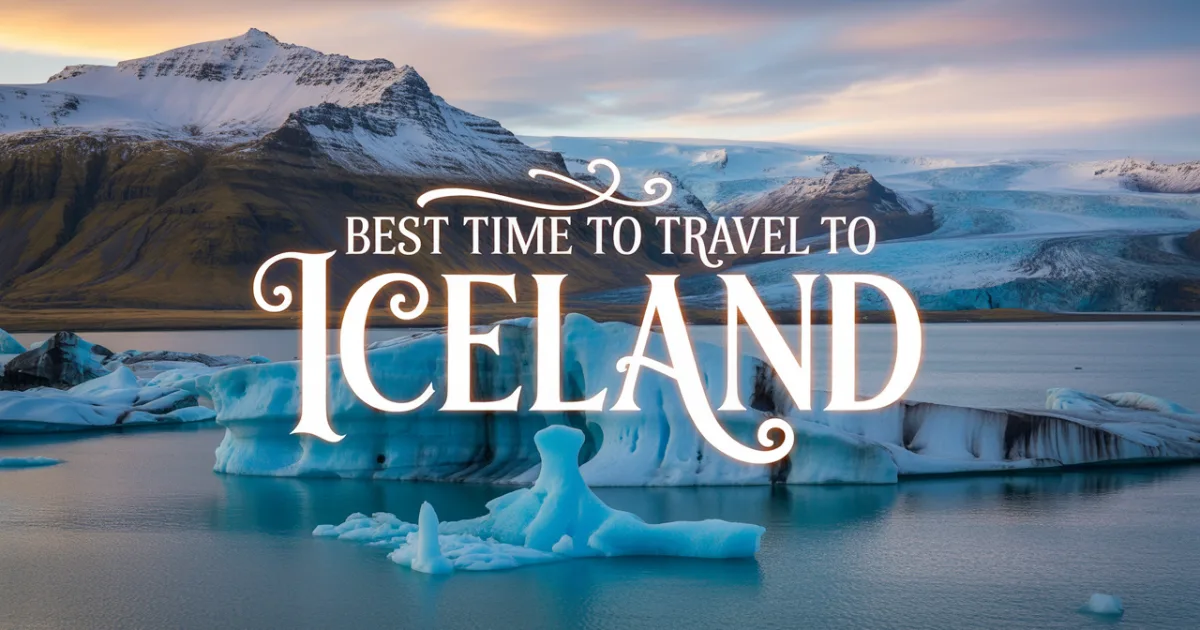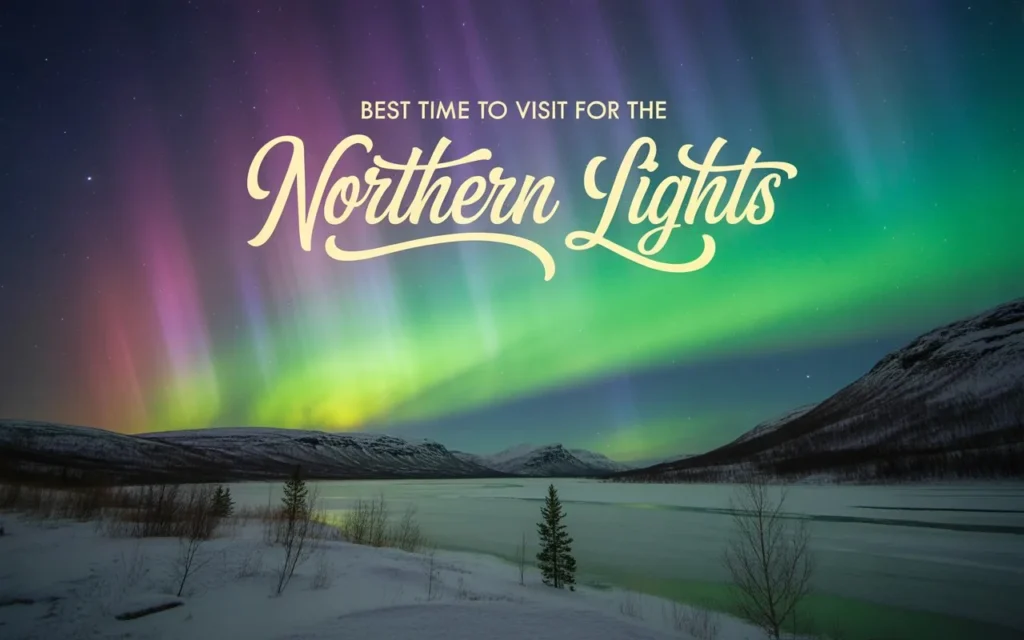Best time to travel to Iceland – A Complete Seasonal Guide (2025)

Choosing the best time to travel to Iceland depends on what kind of adventure you’re looking for. This incredible island offers something unique in every season. Whether you dream of seeing the Aurora Borealis, soaking in geothermal spas, or experiencing the Midnight Sun, Iceland delivers unforgettable moments year-round.
Summer is perfect for exploring fjords and glaciers, while winter brings magical snowy landscapes and cozy evenings. For those seeking fewer tourist crowds and lower prices, the shoulder seasons offer a peaceful escape. In this guide, you’ll discover what each season has to offer and how to make the most of your visit to one of the world’s most stunning destinations.
Table of Contents
Visiting Iceland in Winter (Dec–Feb)
Winter in Iceland is truly magical, featuring snow-covered landscapes and the chance to witness the Aurora Borealis. The long nights are perfect for an Iceland northern lights tour, and activities like snowmobiling in Iceland and exploring glaciers and fjords in Iceland are popular.
Despite the cold, Reykjavík’s public pools and Icelandic hot springs offer warm relaxation. The Blue Lagoon in Iceland remains open, providing a unique experience amidst the snowy backdrop. Winter is also ideal for budget travel to Iceland, with lower travel costs and fewer tourist crowds.
Visiting Iceland in Spring (Mar–May)
Spring brings longer days and blooming landscapes. It’s a great time for hiking in Iceland, as trails become more accessible. The Iceland travel seasons transition, offering a mix of winter and summer experiences.
Wildlife enthusiasts can enjoy whale watching in Húsavík, as marine life becomes more active. The off-season travel Iceland continues, allowing for budget travel to Iceland with fewer tourist crowds.
Visiting Iceland in Summer (Jun–Aug)
Summer is the peak tourist season in Iceland. The Midnight Sun in Iceland offers nearly 24 hours of daylight, perfect for exploring. The Iceland summer weather is mild, making it ideal for hiking in Iceland and visiting fjords and glaciers.
This season is also the best time to see puffins, especially along the coast. Reykjavík public pools and geothermal spas Iceland are popular spots to relax after a day of adventure.
Visiting Iceland in Fall (Sep–Nov)
Fall provides a peaceful escape surrounded by stunning autumn colors. It’s a great time for off-season travel Iceland, with lower travel costs and fewer tourist crowds. The Aurora Borealis Iceland becomes visible again, making it a prime time for an Iceland northern lights tour.
Whale watching in Húsavík continues, and the Blue Lagoon Iceland remains a must-visit. Geothermal spas Iceland provide warmth as temperatures drop.
Best Time to Visit for the Northern Lights

The Aurora Borealis Iceland is best viewed from late September to early April. During this period, the long nights and clear skies offer optimal conditions for an Iceland northern lights tour.
To increase your chances, head away from city lights and monitor solar activity forecasts. Many tours offer guided experiences to maximize your viewing opportunities.
Best Time to Visit for Hot Springs and Wellness
Icelandic hot springs and geothermal spas Iceland are enjoyable year-round. However, the cooler months from September to April provide a unique contrast between the warm waters and crisp air.
The Blue Lagoon Iceland is a popular destination, offering a luxurious experience amidst stunning landscapes. Reykjavík public pools also provide local charm and relaxation.
Cheapest Time to Visit Iceland
For budget travel to Iceland, consider visiting during the off-season travel Iceland from November to April. During this time, travel costs for flights and accommodations are generally lower, and there are fewer tourist crowds.
While some attractions may have limited access, the opportunity to experience the Aurora Borealis Iceland and enjoy geothermal spas Iceland makes it worthwhile.
Events and Festivals to Consider
Iceland hosts various events throughout the year. Summer months feature music festivals and cultural celebrations, while winter brings holiday markets and Iceland’s holiday season festivities.
Participating in local events offers insight into Icelandic culture and enhances your travel experience. Be sure to check event calendars when planning your trip.
Local Tips for Planning Your Iceland Trip
When planning your visit, consider the Iceland travel seasons and your interests. Booking accommodations and tours in advance is recommended, especially during the tourist season.
Pack appropriately for the weather, and be prepared for sudden changes. Make the most of your trip by using local resources and guides for a richer, more memorable experience.
Canclousion
Choosing the best time to travel to Iceland depends on what kind of adventure you’re after. If you dream of seeing the Aurora Borealis, winter is magical. Summer is perfect for long days and road trips beneath the Midnight Sun.
Want to avoid tourist crowds and enjoy off-season travel in Iceland? Spring and fall offer quiet beauty and better travel costs. Whether you’re after Icelandic hot springs, whale watching in Húsavík, or exploring glaciers and fjords, each season has something unforgettable. No matter when you go, Iceland promises wild beauty, friendly locals, and a once-in-a-lifetime experience.
FAQS
July is often considered the best month to visit Iceland due to warm weather, long daylight hours, and great road conditions.
The most affordable time to visit Iceland is during the off-season especially from November to mid-December and January to March.
February, March, September, and October offer the best chance to see the Northern Lights in Iceland due to clear skies and high solar activity.
Yes, Iceland is expensive, but costs can be reduced with early bookings and by traveling in the off-season.
For 5 days, expect to spend around $1,200–$1,800 per person, including accommodation in Iceland, flights, food, and activities.






